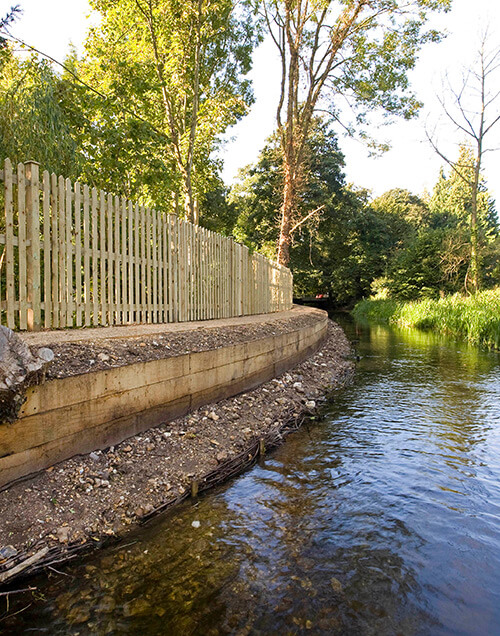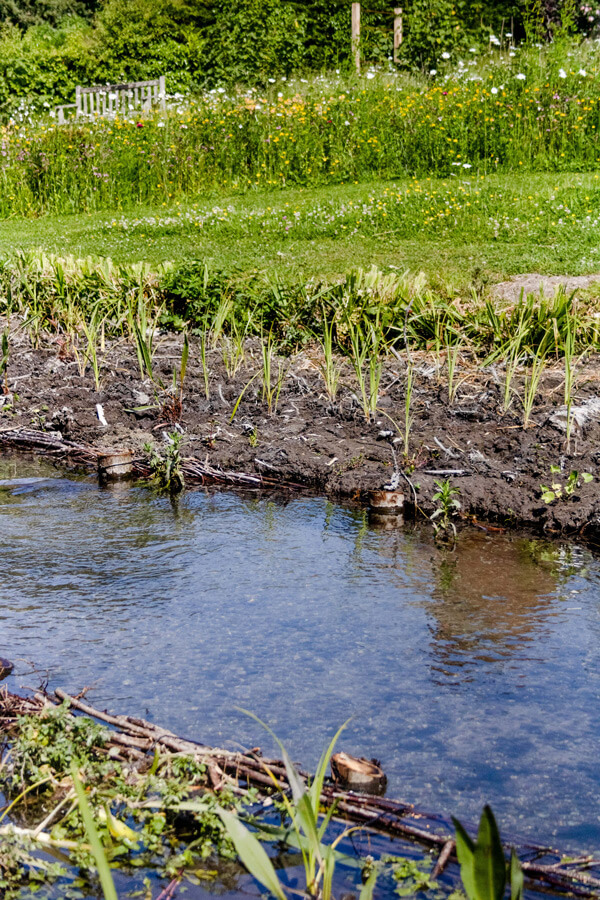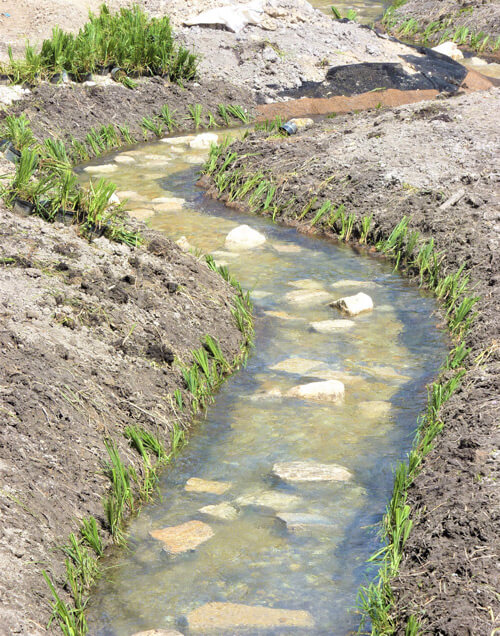Providing a range of innovative and practical solutions to maximise the natural potential of your river to restore good ecological status
River restoration is an exceptionally broad process and, as a result, we offer a wide range of services.
It is increasingly recognised that watercourses have become impoverished through the modifications and management of the past. Bank revetment, deepening and straightening of channels, impoundments and many other modifications have produced environments in which natural ecosystems have been damaged.
Our restoration projects seek to maximise the natural potential of the river, often by undoing many of the artificial modifications it has undergone over time. Narrowing channels that have become overly wide will create a more favourable flow condition and reduce siltation caused by the reduced energy input to suspended sediments. Similarly, raising bed levels of an overly deep river channel to create an undulating gravel bed is a common and effective restoration technique that benefits both the river and the fauna species that inhabit it.
Our company has been working with many environmental organisations to seek innovative and practical solutions to restore good ecological status to rivers and their floodplains. We are constantly seeking new materials and methods of achieving sustainable and diverse water environments working in harmony with natural processes. We offer a range of services from planning services, control structure construction to bio-diversity enhancement.
We use a variety of hard and soft revetment techniques, always seeking the optimum solution for each individual river bank.
Creating bankside habitat is an important technique for protecting river banks from erosion. By regrading and planting a river bank with marginal aquatic species, the roots will anchor the soil in the bank and decrease its vulnerability to erosion. This soft revetment technique carries huge ecological and aesthetic benefits by reconnecting a river to its floodplain and naturalising the system.
Where bank erosion or river velocity are more severe, regrading may not be an option. In these cases, we offer a wide range of bank revetment solutions; ranging from soft hazel faggot revetment, through gabion cages and stone, through solid oak boards and all the way up to hard piling. Each method has different benefits and we will always endeavour to find the most appropriate and cost-effective solution. All of our revetment materials are sustainably sourced.
Hard revetments are not always the most beneficial or attractive solution to a bank stabilisation project and, as a result, we are also adept at replacing failing or ugly existing structures with our own, preferably soft, construction.



Creating bankside habitat is an important component when protecting riverside banks from erosion. We have a proven track record of river habitat creation creating long lasting improvements for ecology and biodiversity.
As well as regrading river banks to create a more natural habitat, we can create artificial berms at the bank edge. This can both naturalise and increase the sinuousity of an overly straightened urban river channel. Filling berms to water level with silt and planting with aquatic marginal species will allow even a concrete banked river channel to support native flora and fauna species, plus greatly increasing the aesthetic value of a channel.
Our marginal planting schemes recreate the traditional, and declining, habitat which aquatic flora and invertebrate species will thrive in. As well as this, by re-naturalising the riverbank and increasing the floodplain connectivity we also benefit aquatic mammals travelling between river and bank, such as the endangered Water Vole or Otter populations. Our water level berms also make ideal wetland habitats for rare amphibian species such as newts.
We source our plants from UK grown local aquatic nursery stock when planting giving us confidence in both the appropriateness and quality of the plants used in our projects.
We have the technical knowledge and resident expertise to design fish easement channels to improve fish passage.
Fish passage is a vital service provided by all rivers, allowing migratory fish to move up and down river systems and find suitable habitats for various stages in their life cycles. Impoundments are often viewed as significant obstructions to fish passage. Complete or partial removal of these structures is one solution to the problem but, where this is not possible, technical fish passes are another solution. Our technical fish pass installations include pool and traverse passes, and baffles.
Avoiding the application processes for a technical fish pass, fish easements are now becoming the preferred option for the mitigation of obstructions in many rivers. A more cost-effective option to the technical pass, a close to nature easement, such as a bypass channel or a rock ramp, can be easily constructed and typically offers a channel which is passable by all or at least more fish species.
Our staff will be able to evaluate each bespoke setting and provide the solution that enable passage to the greatest number of fish and species.


To enquire into our services and find out more, please contact us via email or telephone

Unit 5-6, Green Lane Farm
Ampfield, Romsey
Hampshire
SO51 9BN
Sitemap
© AquaScience LTD | Company No: 05602983 | VAT No: 167 5337 84
Designed by Damteq.